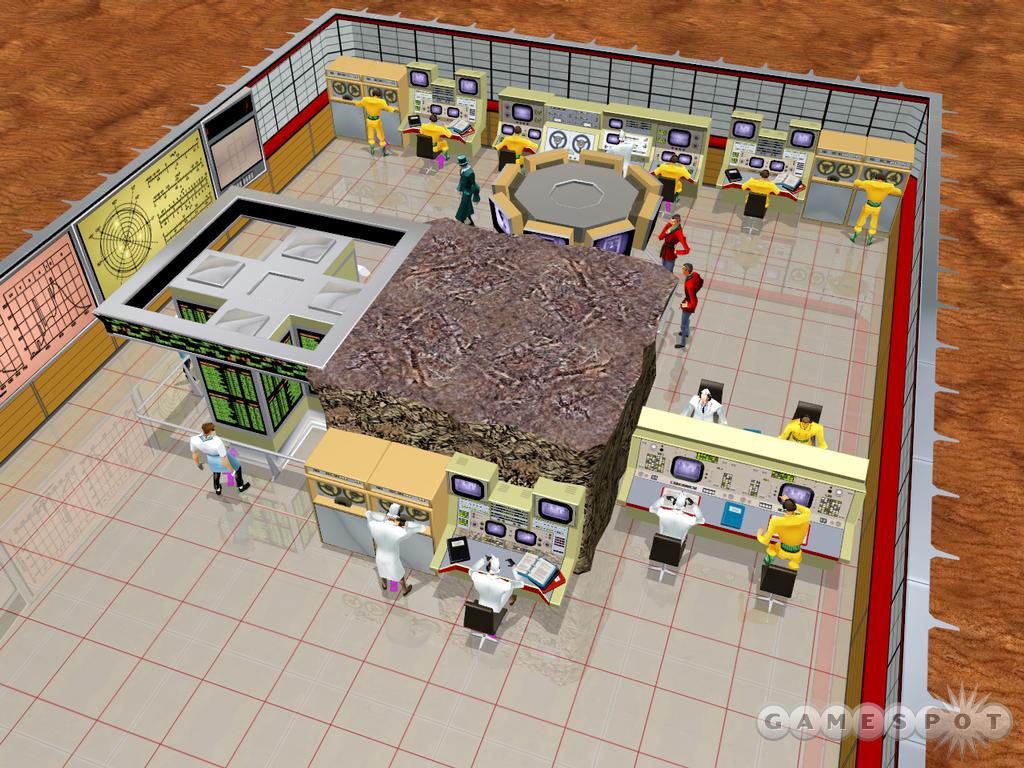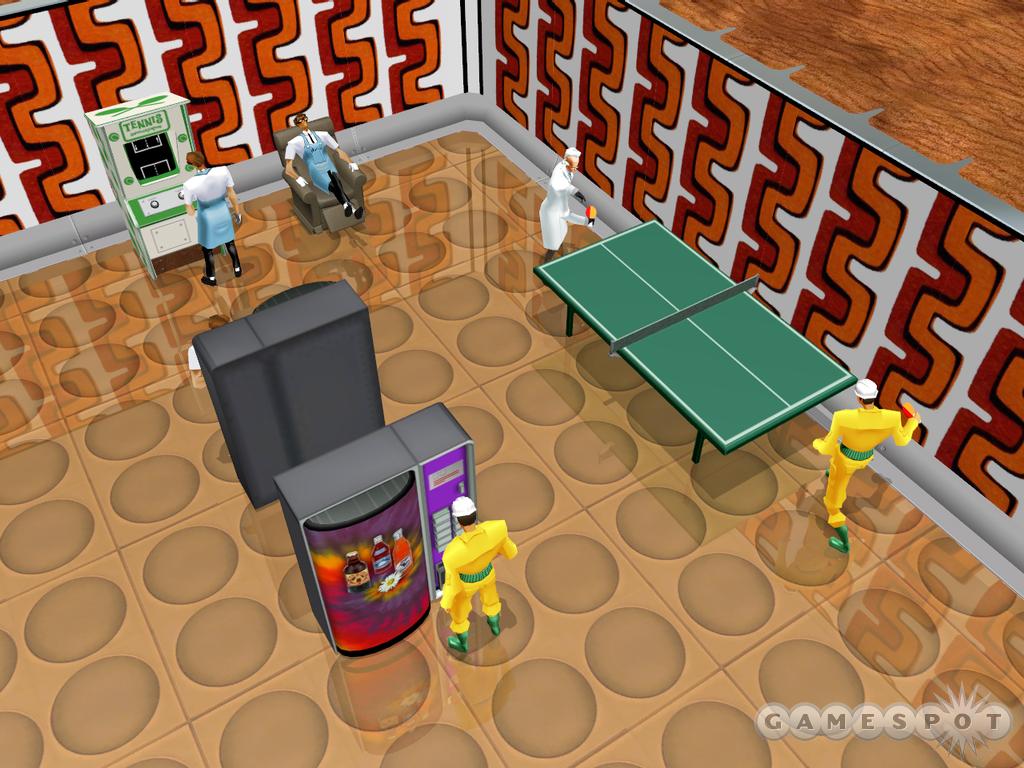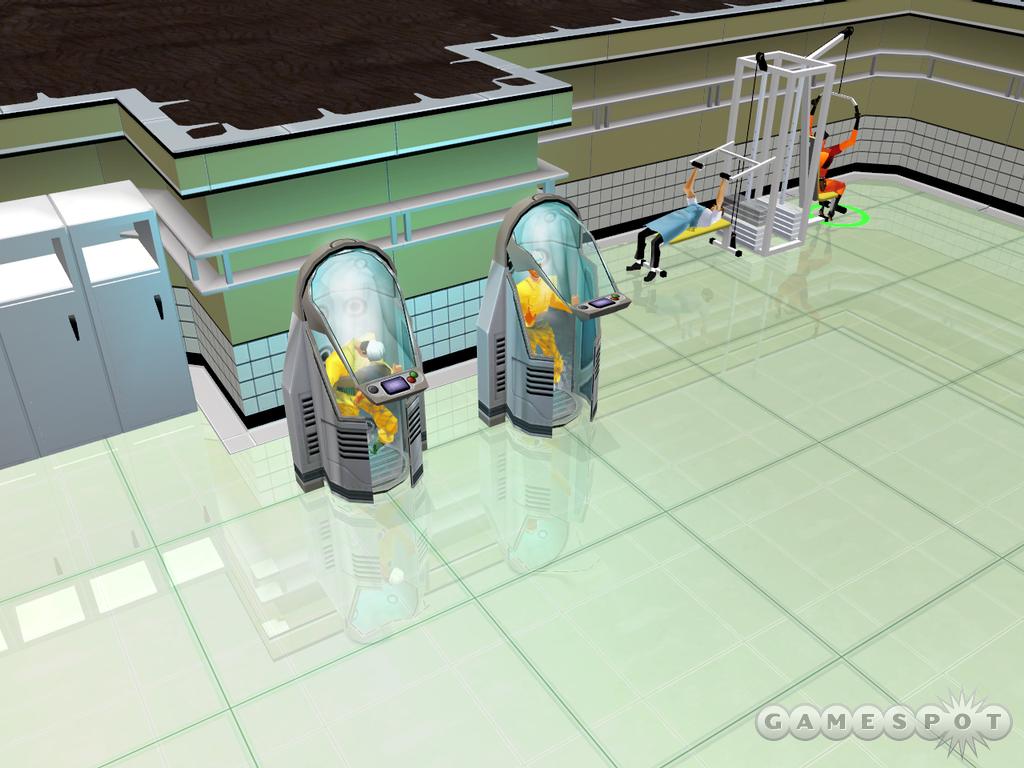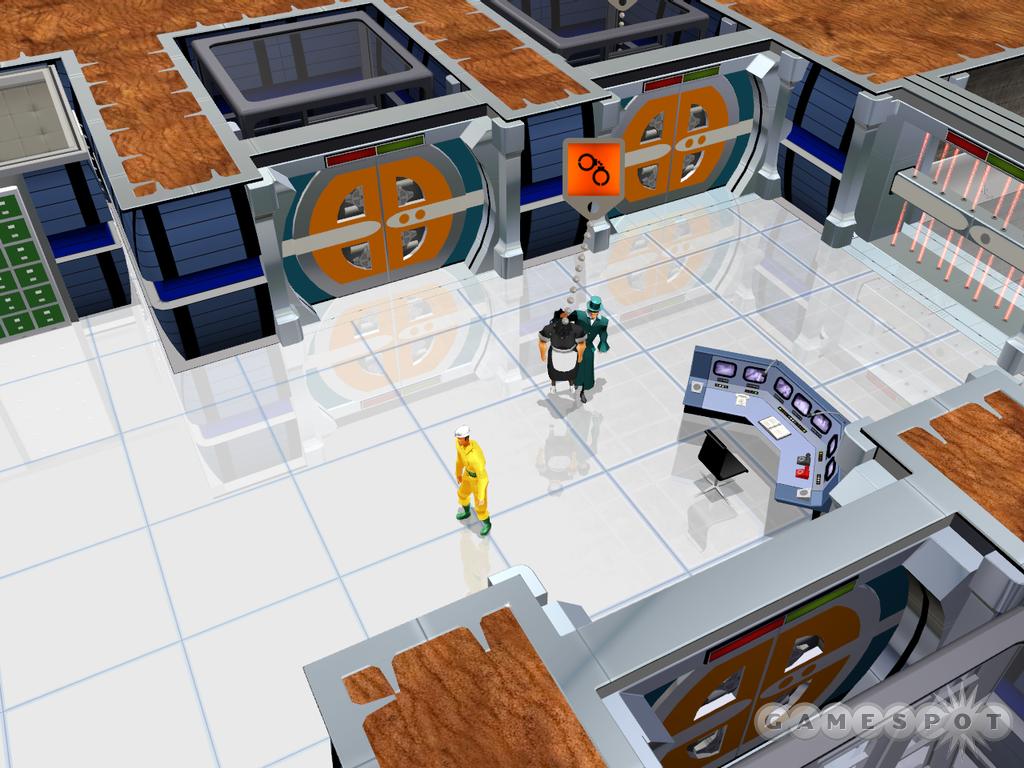Evil Genius Designer Diary #2
Lead designer Sandy Sammarco discusses the challenges of building Evil Genius.
Evil Genius will try to do to strategy games what Austin Powers did to James Bond. It's a humorous, satirical game reminiscent of the classic Dungeon Keeper. In Evil Genius, you'll play the role of an evil genius (oddly enough), who's out to take over the world in the camp-filled 1960s. The game takes place on your island lair. To maintain your cover, you'll operate a tropical resort where tourists from all over the world come to vacation and gamble. But beneath the sandy, white beaches is your underground base, where you'll train henchmen and make your nefarious plans. Governments all over the world will dispatch commandos and superagents to stop you, but you'll build diabolically over-the-top traps to welcome them. In this edition of our designer diaries, lead designer Sandy Sammarco tells us how some of the game's "evil" humor came to be.

Building Evil
By Sandy SammarcoLead Designer
Well, hello there! The powers that be have decreed that I write a few words about some of the goings-on in the most evil spot in our offices: the sugar-walled, candy-bastion that is the design department for Evil Genius. Brave souls shiver and turn away whenever the place is mentioned, while lesser folk crumble to the floor and mewl for the insanity to stop. Though many a daring coder or artist hazards to tread among the wrappers and fast-food stockpiles of the design dungeons, few return. And those who do are changed--normally by about 20 pounds after all the sweeties we force them to eat. (Believe me, nothing beats chocolate bribery.)
My name's Sandy Sammarco, and they tell me I'm the lead designer on Evil Genius. I'm going to reveal a little bit about how we have approached characters, story, and humor in the game. (The secret is fast food and sweets). But first, I'm going to tell you about the single-most-dramatic discovery I've ever made during my time as a designer: Game ideas defy logic.
It's true! Look out of your nearest window. Go on. Chances are you can see a building. Look at the shape. Imagine the function. Fairly straightforward, isn't it? If you move closer, you can start to make out the details: doors so you can get in, keyholes so the doors can be locked, form following function, the parts making the whole. Beautiful, really.
Now, take a game idea. Put it down on a table. Take a few steps back, and admire it. Looks lovely, doesn't it. Everything works. You can see exactly what mechanisms the player is going to enjoy using and how the challenges are going to stretch--but never frustrate--the players. The gods are happy, and the peasants reap a mighty bounty from the land. 
But here's the catch... As you get closer--so that you can try to take in the details--you'll find that they miraculously begin to vanish, unraveling before your eyes! What seemed obvious at a distance suddenly makes no sense and breaks seven other rules to boot. Life becomes an unending struggle to keep hold of the idea's fundamentals and to mold, shape, and stretch (and sometimes--when no one's looking--crush with a big hammer) the rules and game logic to still fit the idea's outline. Basically, a building that used the same logic as game ideas would have 25 doors on the second story, and all of them would make coffee.
Dancing Cossacks
So, humor, eh? It's a funny old thing. How do you make something humorous? Our secret so far is simple: We don't actually try too hard. Most of the humor that people have gotten out of Evil Genius so far has been due more to us exaggerating relatively evil situations. Take one of our agent interrogation methods involving the application of an industrial-sized mixing bowl and a whisk. We didn't set out to make it funny, just original and over-the-top. But once the animation was done and the sound was added, people laughed. I mean, when you think about it, being disembowelled by a two-foot-long whisk, while everyone around you cheers and claps, isn't funny at all. 
The same thing happens with our tourist characters. People just appear to find it amusing to watch a tourist flip out after spotting a body bag and then run around the secret base like a headless chicken, screaming and banging the walls, while minions eat dinner at a nearby mess-hall counter. Perhaps the absurdity of the situation lends the whole affair a humorous touch.
I think perhaps that it's all in the execution. We just try to use original ideas and exaggerate them visually (we kind of have to do this, because the camera can zoom quite a ways out). The same things don't make everyone laugh, but the end result, more often than not, brings out a smile on people's faces.
A lot of our characters have been formed in a very similar way. Although the game is a gentle parody of the spy genre (among other things), when it came to characters, we went initially with a broad aim by using original, larger-than-life characters. We were lucky enough to have some outstanding concept art, which was helped further by a very solid art style. Also, we basically picked the coolest, maddest characters to go in the game.
It might seem strange, but it is actually very easy to work out design mechanics and character personalities from great art, and it's much harder to do things the other way around. Many of our characters almost don't need any explaining (just like some of the coolest Bond villains). Everyone who looks at Red Ivan, for example, has no trouble inferring that he is obviously an ex-military, psychotic, blood-lusting brute. Designing special abilities for him followed fairly naturally (and we think you'll like his grenade-flinging Cossack dance). And the fact was, we got so many concepts that we never had any reason to say, "Oh, if only there was a character that looked like X." (Good job, too. An "X-shaped" character would frankly be a bit rubbish.)
As far as the game's story goes, it has come about through a weird mix of several disparate yet equally important elements. Firstly, there's what content we have and can create. There's not much point in creating a complex plot involving a robo-calamari when the producers--bless 'em (or curse 'em, if you know any good ones)--tell you that you can't have a robo-calamari. You've got to work with what you've got. Secondly, there is the obligatory homage or two. You know, you can't be an evil genius without having some plan to take over the world. You just can't!

Finally, there's the gameplay. The story, no matter how good, is just that--a story. At the end of the day, we are making a game that we want people to enjoy playing, not reading. It all adds up to create a very interesting mix.
Well, I'd love to tell you more, but I note that you're not dangling above a tankful of piranhas. No flesh-eating imminent death, no revelations of the master plan. Sorry, but them's the rules.
Got a news tip or want to contact us directly? Email news@gamespot.com
Join the conversation